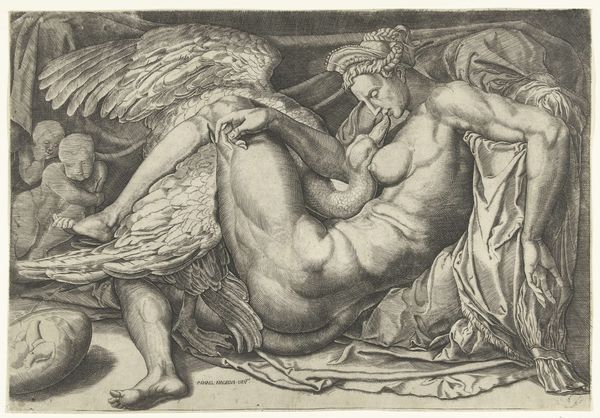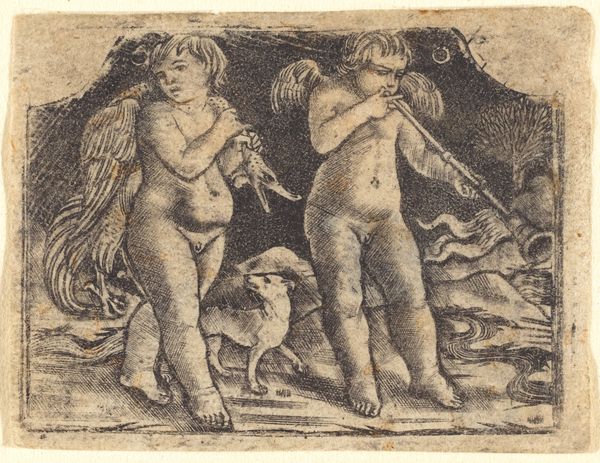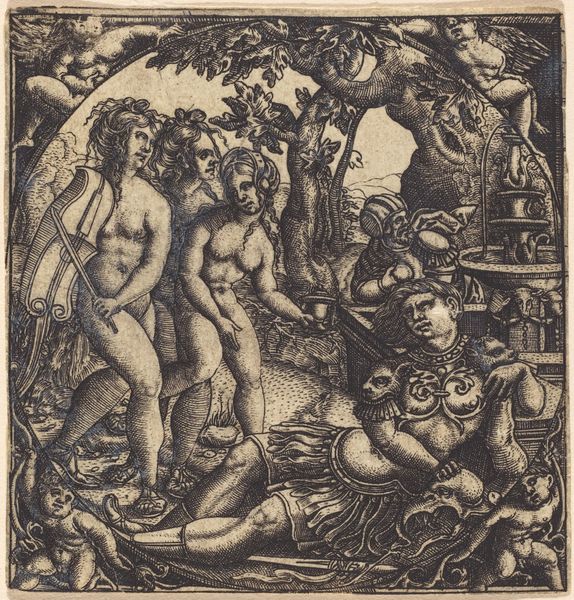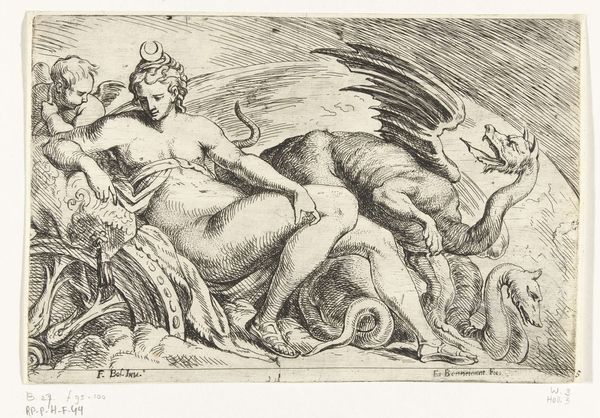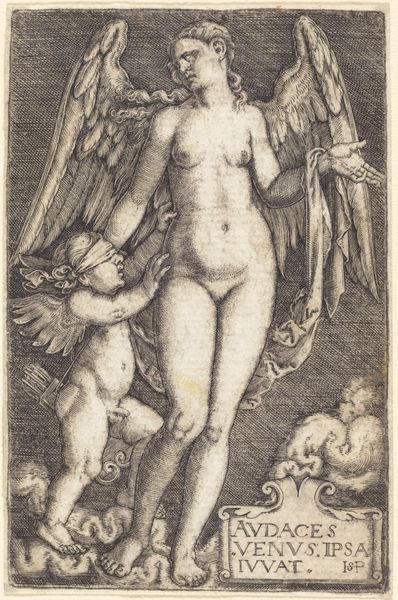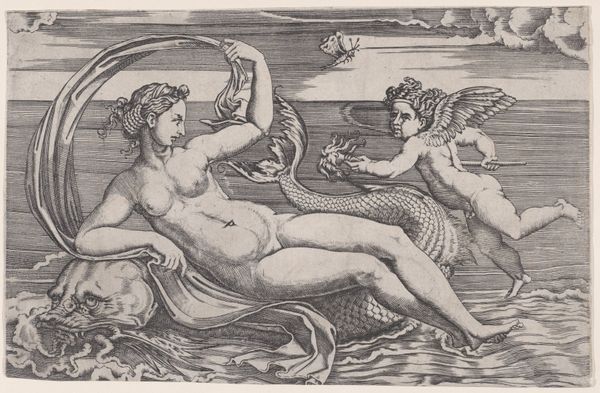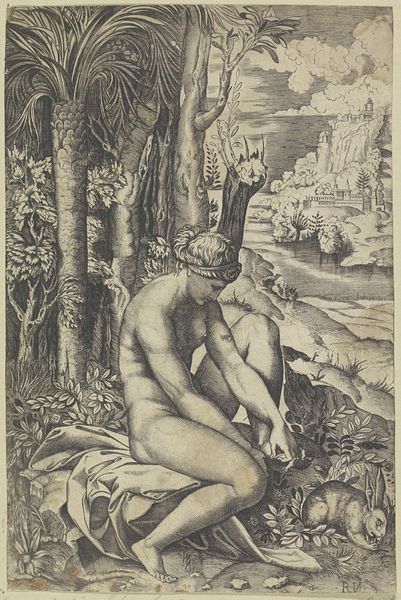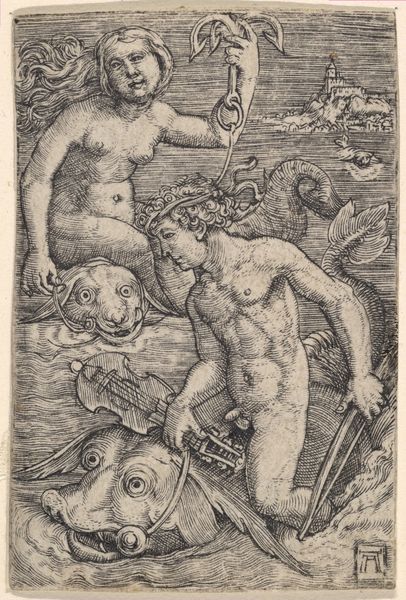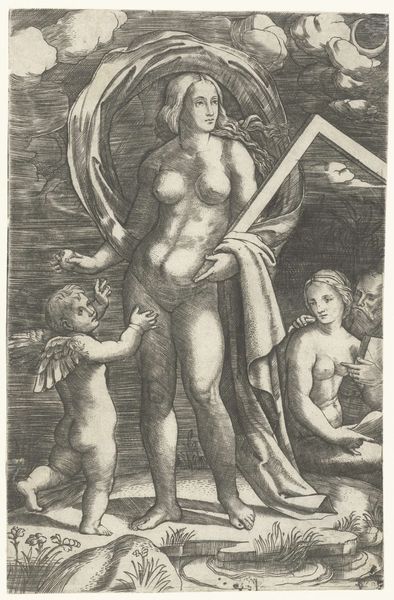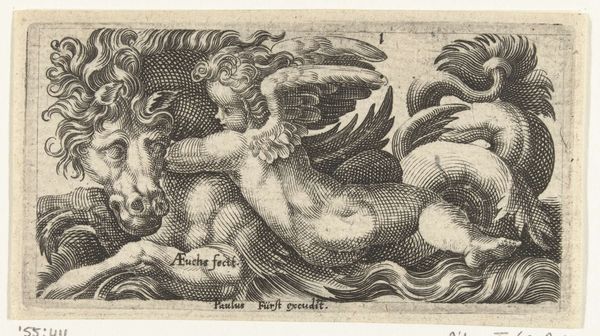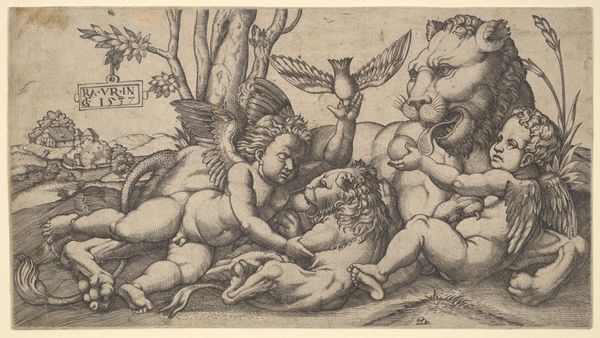
print, engraving
#
allegory
#
pen drawing
# print
#
figuration
#
form
#
line
#
northern-renaissance
#
nude
#
engraving
Copyright: National Gallery of Art: CC0 1.0
Curator: Here we have Sebald Beham's "Leda and the Swan," an engraving from 1548. It’s a powerful depiction of a very troubling subject, isn’t it? Editor: It's undeniably striking, formally. The dense lines create a certain unease, almost a claustrophobia. The way Leda is framed by the swan's wings… Curator: Beham masterfully employs line work to delineate form and texture, doesn't he? The precise engraving technique gives the swan's feathers a tangible quality, contrasting with Leda's smooth skin. The composition uses a distinct foreground and background. There is a fortified city behind them as well as a body of water and the pair are centrally placed. Editor: But that's precisely the issue, isn't it? We cannot simply discuss composition without addressing the violence inherent in the myth. This isn’t just an image of form and texture. It presents the rape of Leda by Zeus disguised as a swan. To divorce the formal aspects from the representation of sexual assault seems, at best, insensitive, at worst, complicit. Where's the recognition of trauma, the violation, the loss of agency? Curator: I understand your concerns, but Beham, working in the Northern Renaissance tradition, was likely engaging with the classical narrative in a symbolic way. There are precedents here that inform the style. One can read this print as an allegory, where the focus is not on the literal act of violence but on the consequences of divine intervention and the instability it introduces into the human realm. We need to keep it situated in its own history. Editor: But whose realm are we talking about? This piece has a place in the continuum of artworks that continues to depict sexual violence. I see that classical allusion argument but ultimately I believe we should engage actively with a piece rather than sanitize it in light of history. We have the option of acknowledging not only art's historicity, but our current awareness of sexual exploitation as well. How might Beham have made different choices given our evolved discourse? It’s food for thought. Curator: Perhaps. But engaging with art means allowing it to speak on its own terms first, understanding its formal language and historical context. Editor: And for me, that means questioning those very terms, pushing back against historical complacency, and seeking accountability. This has been really revealing. Curator: Agreed. Perhaps the real power of art lies in its ability to provoke such varied interpretations, even conflicting ones, across time.
Comments
No comments
Be the first to comment and join the conversation on the ultimate creative platform.

